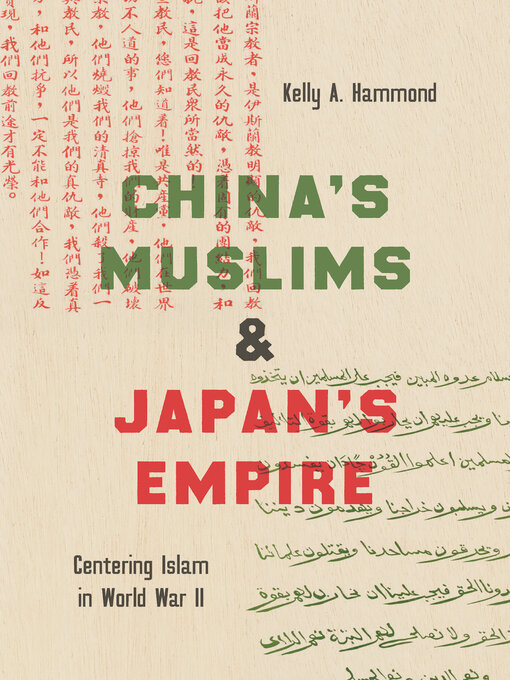- All Magazines
- Popular Magazines: Always Available
- Cooking and Food Magazines
- Craft Magazines
- News and Politics
- See all magazines collections
This history can be told only by reinstating agency to Muslims in China who became active participants in the brokering and political jockeying between the Chinese Nationalists and the Japanese Empire. Hammond argues that the competition for their loyalty was central to the creation of the ethnoreligious identity of Muslims living on the Chinese mainland. Their wartime experience ultimately helped shape the formation of Sino-Muslims' religious identities within global Islamic networks, as well as their incorporation into the Chinese state, where the conditions of that incorporation remain unstable and contested to this day.
-
Creators
-
Series
-
Publisher
-
Release date
September 30, 2020 -
Formats
-
Kindle Book
-
OverDrive Read
- ISBN: 9781469659664
-
EPUB ebook
- ISBN: 9781469659664
- File size: 7766 KB
-
-
Languages
- English
-
Reviews
-
Publisher's Weekly
August 17, 2020
Hammond, professor of East Asian History at the Univ. of Arkansas, debuts with an illuminating overview of Japan’s overtures during WWII to minority Muslim communities in Asia as a nation-building tactic. Beginning with the occupation of North China in 1937, the Japanese government attempted to build a network of loyalists who could maintain trade networks, practice diplomacy, and voice political support. Focusing mostly on Chinese-speaking Muslims—with occasional examinations of Tatar, Afghan, and Filipino Muslims—Hammond provides key context about the justifications for Japan’s outreach (such as fabricated shared historical connections) while also showcasing the successful establishment of markets between Japan and Sino-Muslim communities, who had to chose to either collaborate with or resist the Japanese occupation. Hammond’s observations on the “incredible diversity among Muslim communities and Islamic practices throughout Asia” provide an eye-opening departure from the more common, Western-oriented perspectives on WWII in Asia, and counters the stereotypes of Japan and China as internally homogenous nations with single schools of thought. Though the prose is occasionally dry, Hammond’s thorough research will illuminate lay readers and scholars alike. This is an excellent and important addition to the WWII history shelf.
-
Formats
- Kindle Book
- OverDrive Read
- EPUB ebook
subjects
Languages
- English
Loading
Why is availability limited?
×Availability can change throughout the month based on the library's budget. You can still place a hold on the title, and your hold will be automatically filled as soon as the title is available again.
The Kindle Book format for this title is not supported on:
×Read-along ebook
×The OverDrive Read format of this ebook has professional narration that plays while you read in your browser. Learn more here.

